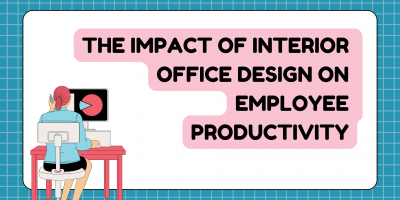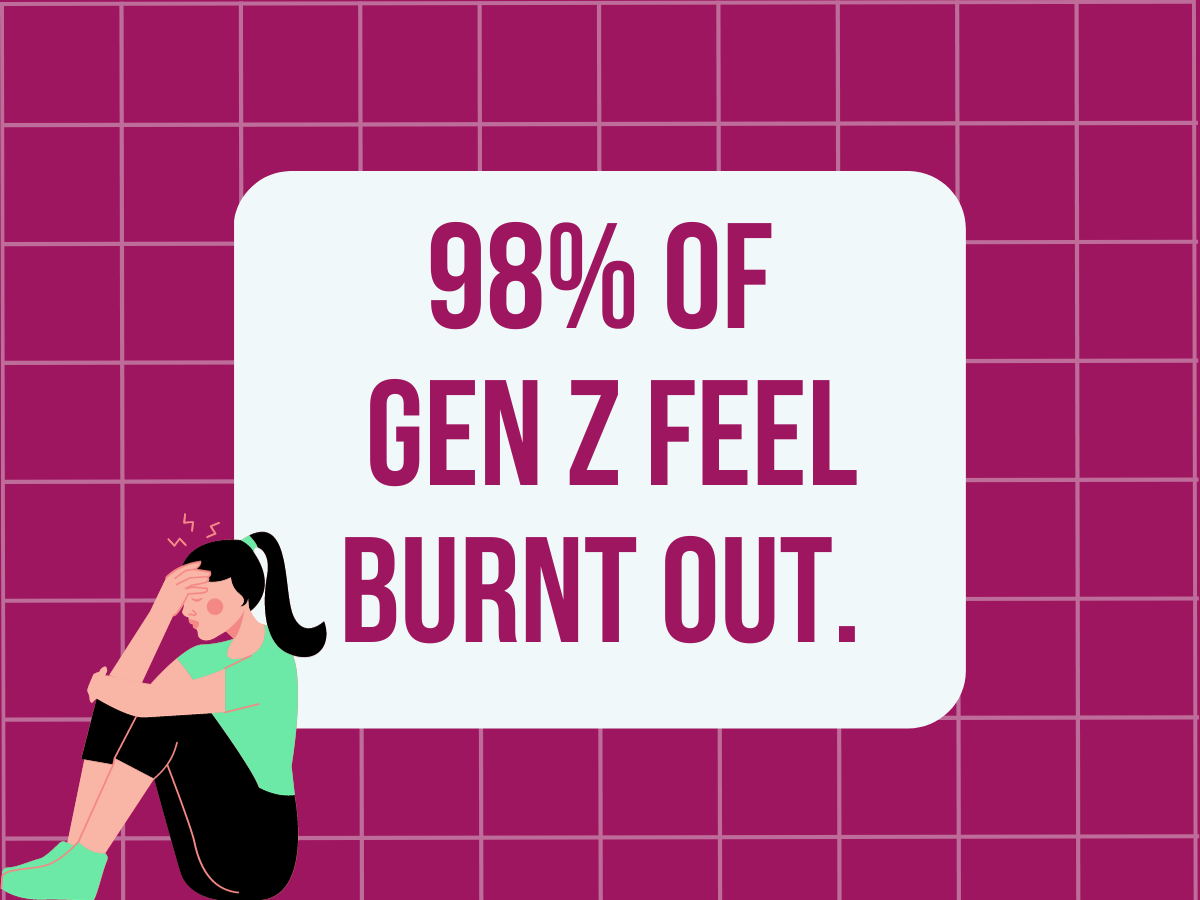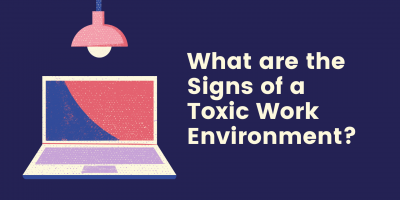
The Impact of Interior Office Design on Employee Productivity
How does interior office design impact employee productivity, from desk layout to lighting choices?


Senior HR Consultant at HR Answers

HR Executive at Codegnan

Managing Director at Medallion Partners

Founder & CEO of Bemana
Research on workweek productivity shows that 41% of employees hate Mondays, while 80% agree it’s the most stressful day. They attribute this to an overwhelming workload, too many meetings, and feeling unmotivated and unproductive.
The Monday blues is a real, universal feeling.
However, this collective aversion has transcended beyond discontent and complaints, initiating a new trend in the workplace – the Bare Minimum Monday (BMM).
A response to the “Sunday scaries,” which is the anxiety employees face in anticipation of the workweek and resuming their work routines, this trend is prevalent amongst younger generations of workers, especially Gen Z. By eliminating stressors at the start of the week, BMM is supposed to improve employee engagement by the end of it.
But what is the bare minimum Monday, how did it start, and does it impact the workplace?
Bare minimum Monday is the practice of doing the minimum required work at the start of the week. The trend encourages employees to lower their expectations, take more breaks, and only finish what’s absolutely necessary for the day.
Its goal is to help them avoid burnout by reducing the pressure of Mondays.
That way, employees can be more focused and engaged throughout the rest of the week. BMM also helps alleviate anxiety beforehand, leading to a less stressful Sunday and a better work-life balance.
While the reason behind it is nothing new, the term first appeared on TikTok in 2022.
Digital creator Marisa Jo Mayes used it to describe her solution against feeling anxious on Sundays and overwhelmed by Monday’s workload.
In an interview for Business Insider, Mayes explains how she started allowing herself to do less and managing her expectations. She also limited her work tasks to a maximum of two or three instead of multitasking. This approach helped her overcome the paralyzing pressure of Mondays, especially as a neurodivergent person.
Since then, the trend has gone viral, amassing millions of views.
Many platform users have come forward, saying this approach helped them deal with stress and burnout. Others criticize it, pointing out how it represents the laziness of Millennials and Generation Z.
Mayes herself said that she either gets praise for it or backlash.
Regardless of one’s sentiment, we will likely see more of these trends emerge as workplace stress rises.
“Whether it’s bare minimum Monday, Hump Day, or Fall-Out Friday, it is a fact that as living creatures, we have natural ebbs and flows to our productivity,” says Jessica Milewski, Senior HR Consultant at HR Answers.
Milewski argues that this rhythm varies from person to person, explaining what that means for businesses and their workers:
“As employees, we should be aware of our unique productivity pattern and look for opportunities to maximize our effectiveness when we are best suited for it.
As leaders, we should seek to understand the circumstances that our team members perform at their best and aim to design the work or schedule around their needs as much as possible.”
Thus, as the workforce is looking for ways to avoid burnout, this creates an opportunity for companies to improve their employees’ experience by alleviating the strains on their well-being and productivity.

Despite being popularized on TikTok in 2022, the BMM trend seems to have been long in the making.
According to Gallup’s 2023 State of the Global Workplace report, employee stress remains at a historic high despite improved engagement.
As a result, more than half of workers (59%) are quiet quitting.
Of those, 16% would change how their company approaches well-being and work-life balance, suggesting less overtime, more work breaks, and working from home, among other things.
The mental toll on younger generations is even more evident, as the Cigna 360 Global Well-Being survey reveals that they experience higher stress than the average. Namely, 91% of those aged 18 to 24 reported being stressed, compared to Millennials at 87% and the average at 84%.
What’s more concerning is that almost all of Gen Z, or 98%, feel burnt out.
The thin line leading to burnout gets crossed when the pressure of deadlines or a heavy workload takes over, and stress becomes chronic. Thus, many of the workplace trends we’ve seen in recent years are a backlash to employers who endorse burnout culture and fail to acknowledge employee needs. Bare minimum Monday is just the latest response to this, right after the Great Resignation, quiet quitting, rage applying, etc.
However, while some exhibit serious repercussions, like losing top talent and low engagement, this one might be doing the opposite.

Managing burnout in the workplace requires detecting potential stressors, taking control of one’s time, bringing more structure to the workday, and taking the time to unplug.
In practice, bare minimum Mondays address these challenges.
Employees following this trend have started to do the bare minimum at work on days when pressure is the highest. They take a day off from meetings and non-urgent emails, minimize their expectations and to-do lists, and prioritize only the most urgent or least demanding tasks. Some even go as far as practicing self-care, like meditation, reading, or taking a break from technology.
As counterintuitive as it sounds, starting the week off by being less productive should lead to better productivity and improved mental well-being.
Research shows that higher stress levels are associated with lower productivity. Thus, doing something that helps employees navigate through Monday pressure could increase their performance.
That is, only if the job allows it.
Many industries and roles that aren’t as flexible demand employees’ full attention and engagement. Failure to do this can lead to severe repercussions if workers simply decide to “do less.”
Moreover, complete disengagement and voluntarily shortening the work week can have negative career consequences. The creator herself, Marisa Jo Mayes, has pointed out that BMM may not work for everyone, clarifying how she’s self-employed, doesn’t have children, and works from home.
Michael Morgan, Managing Director at Medallion Partners, agrees that while the idea of minimal work on Mondays can help reduce stress, it’s essential to balance it with maintaining productivity and meeting work expectations.
“Ultimately, whether it works out for the employee in the long run depends on the nature of the job and individual preferences.
Employers might have differing opinions of the work performance produced. However, it is evident that there is a necessary cultural conversation about the role of work and the cost of living, both energetically and financially,“ concludes Morgan.
Prioritizing yourself as a human over a worker is the premise of BMM.
Thus, it introduces a dynamic shift in workplace practices. For Gen Z, this is also a way to regain authority over their time and challenge the traditional workplace norms.
While notably not for everyone, employers who want to stay current in the evolving workplace landscape can leverage this trend to increase employee engagement, satisfaction, and productivity.
Linn Atiyeh, Founder and CEO of Bemana, agrees with the positive aspect of BMM.
“As a recruiter, I have no problem with the concept of bare minimum Mondays, and in fact, I think I’ve known about it long before it had a name. I’ve worked with many companies that eschewed Monday meetings for a similar reason, so Gen Z can’t take credit for the whole idea.
But normative determinism is genuine, and admitting out loud that you’re not your best on Mondays can lessen the furtiveness that comes along with post-weekend slacking.
I think that’s a good thing.
Putting words to a vague concept helps eliminate the unproductive guilt workers tend to feel when they’re unable to give 100%, and instead reframes it as a normal condition worth making allowance for.”
However, the clash between doing less work, even for a day, and conventional expectations can create tension and misunderstandings, especially around work commitment.
Striking a balance requires a flexible workplace culture built on trust.
It means introducing a remote or hybrid work model, unlearning micromanagement, and allowing employees the autonomy to manage their tasks and time.
Trust plays a vital role in this context, as it involves the belief that employees will meet their responsibilities and deliver results, regardless of the hours or location of their work.
Ultimately, the bare minimum Monday concept compliments a company culture that prioritizes employees and their needs.

In 2020, Generation Z comprised slightly over 6% of the workforce. By 2030, this number will surge to 30%.
Often described as “the most diverse generation in history,” considering their expansion and influence, Gen Z employees are already shaping the future of work.
Their entry into the talent pool faced many challenges, including a pandemic, growing inflation, social and political instability, layoffs, and a housing crisis. However, that’s precisely why they tend to disrupt traditional employer-employee interactions, challenge the status quo, and bring clear expectations to the workplace.
For example, beyond salary, according to SHRM, Gen Z employees are focused on company culture, work environments where they can thrive, and supportive and caring leaders.
Moreover, they appreciate trust and transparency, are driven by values and ethics, and are not keen on compromising their personal lives for a job.
Speaking from experience as an executive recruiter, Michael Morgan explains that younger professionals push for more flexibility and a focus on well-being. However, he also points out the importance of BMM for all workers.
“While bare minimum Monday may seem like a Gen Z-driven concept, it raises important questions about work-life balance and stress management for all generations in today’s fast-paced world,” says Morgan.
As the latest generation of employees enters the workforce, new trends that tend to their needs are to be expected. For employees anticipating these shifts, it’s crucial to understand how and why they happen and find the best ways to respond to the challenges and opportunities they bring.

According to HR Executive at Codegnan, Soumyaja Vagvala, “Gen Z is all about correcting the work-life balance that all the previous generations messed up badly.
Irrespective of generation, everyone is aware of the feeling of Monday blues, where employees push themselves against their will to give their hundred percent.
So, in hindsight, a bare minimum Monday can be a good way of dealing with that miserable feeling and starting the work week in a more relaxed manner. It can definitely help reduce work stress and motivate employees to give their best.“
Although favorable, there’s a potential risk of BMM transforming into quiet quitting.
Workers might unintentionally distance themselves from work if the practice evolves from occasional stress relief to consistent disengagement.
Thus, employers should be attentive to what “doing the bare minimum” means for their employees and whether it improves their productivity.
Alternative practices can foster a healthy work-life balance for those who refuse or can’t seamlessly adopt this approach—for example, implementing flexible schedules, encouraging regular breaks and vacation time, and investing in wellness and Employee Assistance Programs (EAPs) to address employee mental well-being.
Embracing these strategies, even in industries less suited for bare minimum Monday, creates the right work environment for the next largest talent pool of employees.
Content Writer at Shortlister
Browse our curated list of vendors to find the best solution for your needs.
Subscribe to our newsletter for the latest trends, expert tips, and workplace insights!

How does interior office design impact employee productivity, from desk layout to lighting choices?

Deciding to stay or leave a toxic work environment isn’t always straightforward. However, recognizing the signs is the first step toward resolution.

Following a wave of mass resignations, employees unsatisfied with their new jobs faced the “Great Regret.” Now, a new workplace trend is on the rise.

While competitive salaries help, retaining top talent involves much more than financial incentives. These insightful employee retention statistics reveal how employers can turn high turnover into even higher loyalty.
Used by most of the top employee benefits consultants in the US, Shortlister is where you can find, research and select HR and benefits vendors for your clients.
Shortlister helps you reach your ideal prospects. Claim your free account to control your message and receive employer, consultant and health plan leads.